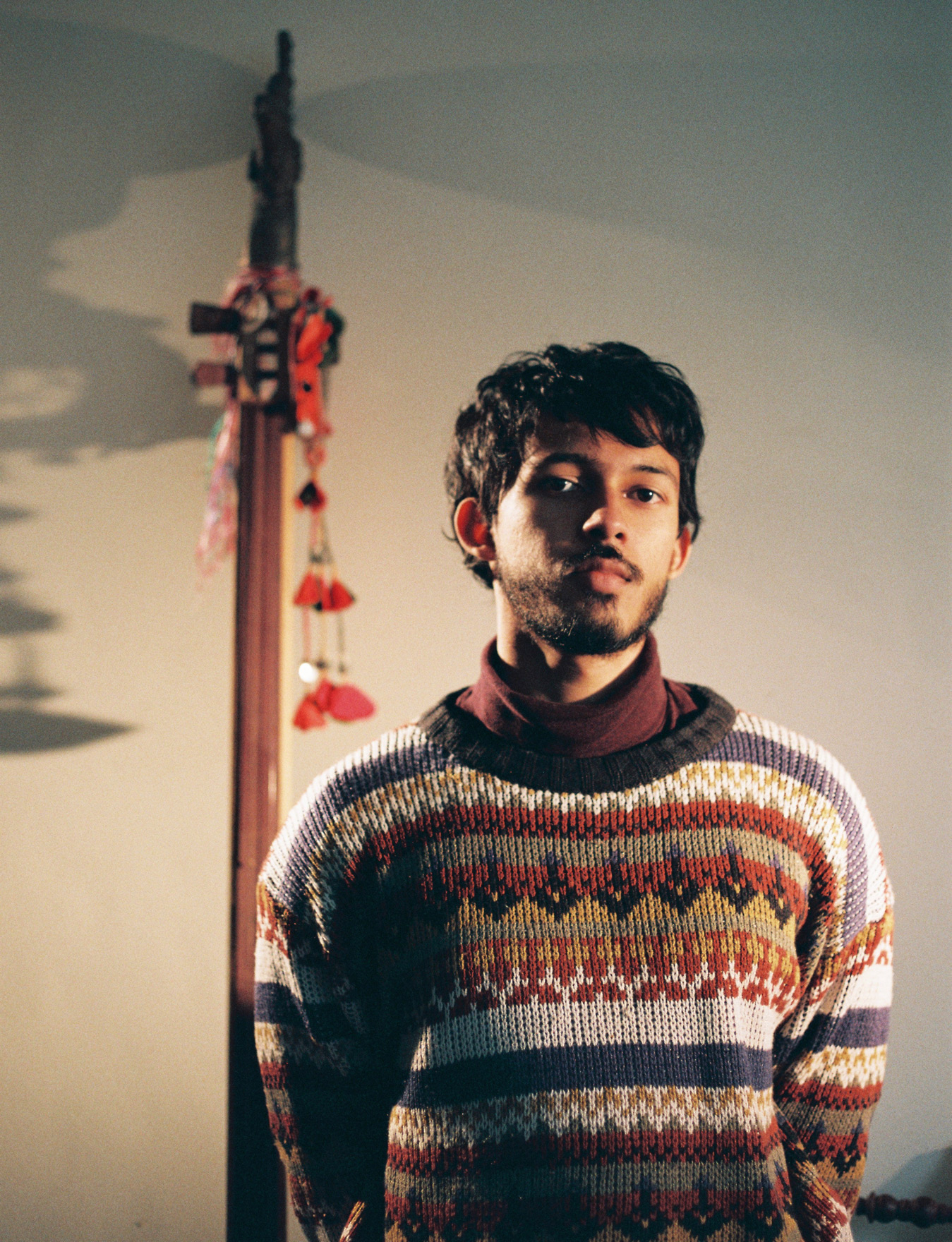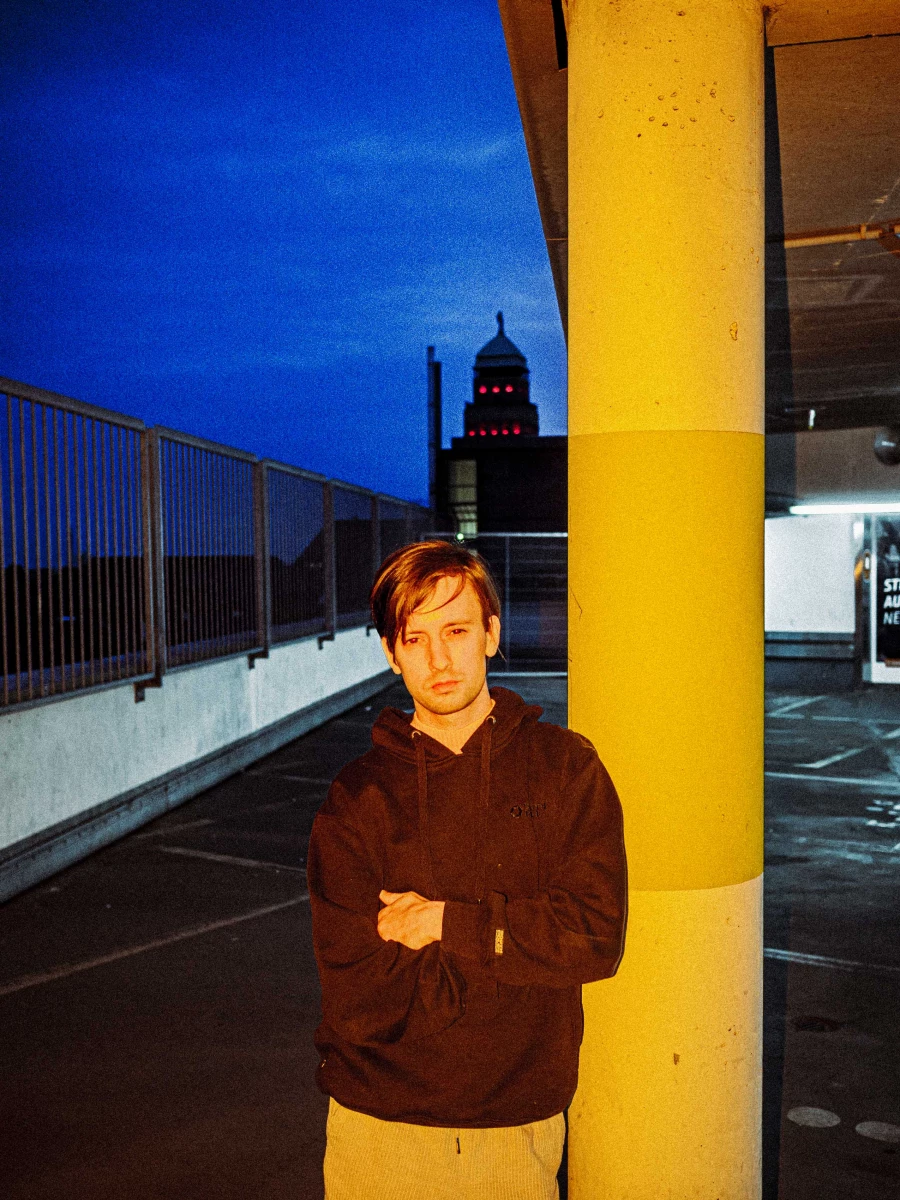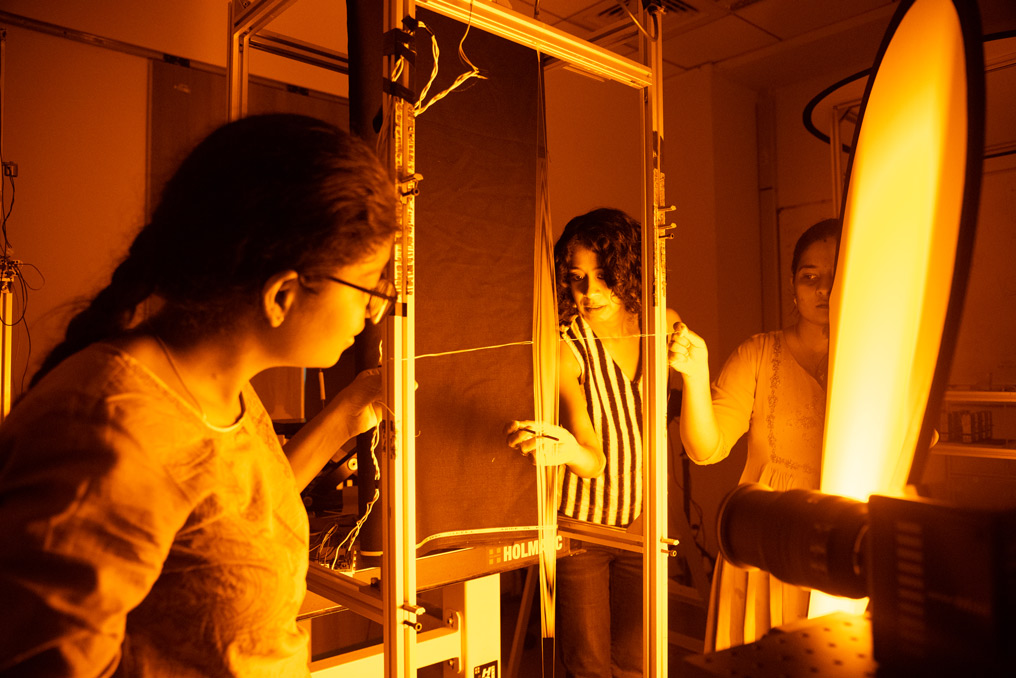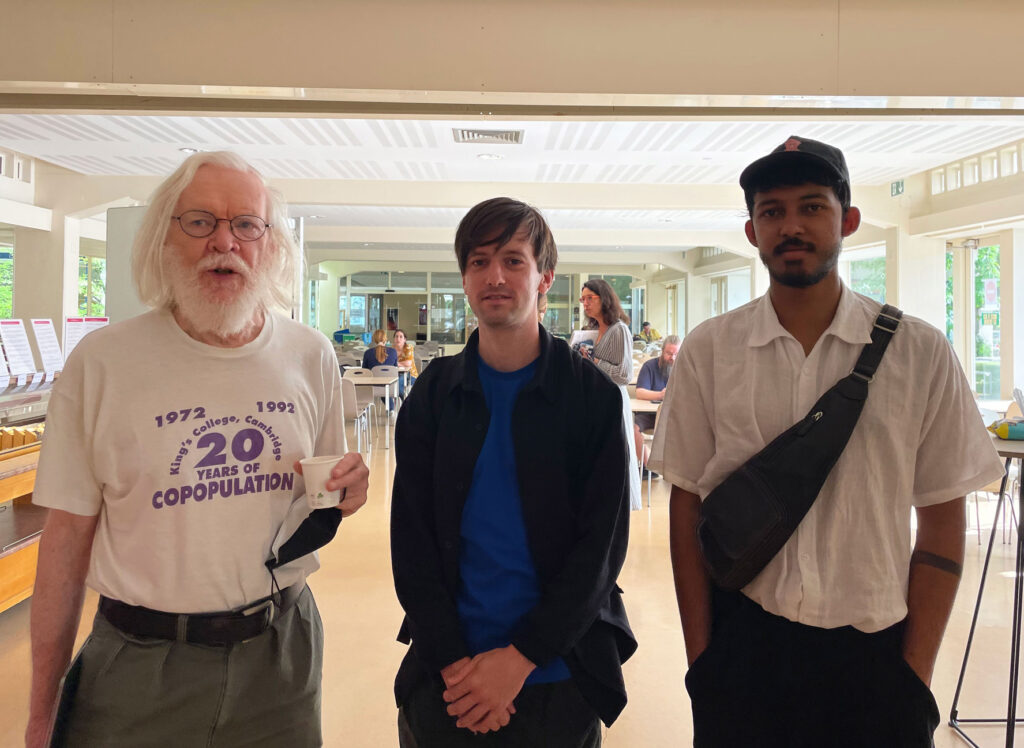- Tags
- Artistic residencies, Connect South Africa
- Author
- Ana Prendes

Ahead of their upcoming stay at CERN, we delve into the artists’ experience in the array of astronomy observatories in South Africa.
‘All these quests for knowledge in astronomy and particle physics push further and further into the past, reaching that critical moment when it all began. Every discovery risks upending what we previously believed to be true and demands us to open our minds, expand our senses and shift our ways of being according to new knowledge. And I think this is an ultimately peaceful and beautiful picture,’ reflected Kamil Hassim after his stay in South Africa with Ian Purnell. Both artists spent time at an array of optical and radio astronomy observatories across the country.
Quests for knowledge in astronomy and particle physics require us to expand our senses
Connect South Africa marks the first international residency under Connect, a collaborative framework between CERN and the Swiss Arts Council Pro Helvetia. Between 2021 and 2024, this platform fosters artistic experimentation in connection with fundamental science. South Africa is the inaugural country in Connect’s international editions, which includes joint residencies with scientific organisations to be announced yearly.

Hassim and Purnell enjoyed a singular dynamic of an art residency, diving together into the world of cosmos sciences while exchanging their visions and enriching each other’s practices. Their journey began at the Hartebeesthoek Radio Astronomy Observatory (HartRAO), located in the Magaliesberg hills, west of Johannesburg. Managed by the South African Radio Astronomy Observatory (SARAO), HartRAO houses two telescopes for radio astronomy and space geodesy research. Here, Hassim and Purnell learned firsthand about the complex instrumentation used to capture the cosmos, stepping inside one of the massive radio telescopes and engaging with scientists about the imaging of distant celestial bodies.

The artists continued their exploration at the South African Astronomical Observatory (SAAO) headquarters in Cape Town, the national centre for optical and infrared astronomy. Engaging with scientists like Daniel Cunnama, astronomer Nicholas Erasmus, and mechanical engineer Kathryn Rosie, they explored the observatory’s cutting-edge optical telescopes. These instruments collect ultraviolet, infrared, and visible light from stars and galaxies, shedding new light on our understanding of the universe.

The residency’s third week took Hassim and Purnell to the Karoo, a remote semi-desert area in the Northern Cape province, where SAAO’s Sutherland facilities and the Southern African Large Telescope (SALT) are located. SALT, the largest optical telescope in the Southern Hemisphere, is capable of studying astronomical phenomena beyond the reach of northern telescopes. ‘We got to experience larger-than-life instruments that collect information from the far reaches of the cosmos. These require positioning in areas with as little human interference as possible, creating new opportunities for nature and technology to meet,’ remarked Purnell. The Karoo’s clear, unpolluted skies provide the perfect backdrop for the observatory’s work thanks to the absence of human interference.
The vastness of the instruments, drawing in data from the farthest reaches of space, seems to transcend time itself

Under the guidance of astronomer Daniel Cunnama, the artists participated in nighttime observations, engaging in stargazing the Milky Way and reconnecting with indigenous ways of interpreting the sky. As Hassim recalls:
‘One night, alone in the dark amidst the semi-desert region of the Karoo, I was listening to the conversations of nocturnal creatures, most of which could have fit in my palm, as I waited for the Milky Way to become visible sometime in the early hours of the morning. I noticed how the crickets, beetles, frogs, birds and others inhabited their respective frequency band, occupying their own space and leaving room for those around them. There is something special about visiting places with little noise. I understand noise not as a sonic element but as how it permeates in the form of signals through the human world, which often prevents listening, seeing and perceiving certain things. Only in the darkness and silence of the Karoo, I felt I could observe and listen to the glow and sound of my mind for the first time in my life. No wonder the astronomy telescopes need these spaces because only in these conditions can deep looking take place. And in these spaces of silence and human absence, the extent of our effects on the planet becomes stark.’
The extent of our impact on the planet becomes starkly clear here
The residency’s final leg brought Hassim and Purnell to a rock gong, a lithophone used for thousands of years in various parts of Africa to produce musical notes. Subsequently, they journeyed to Carnarvon to visit SARAO’s radio telescope field. Having explored the edges of the cosmos, the artists will now delve into the subatomic world during the second part of their residency at CERN in May.





